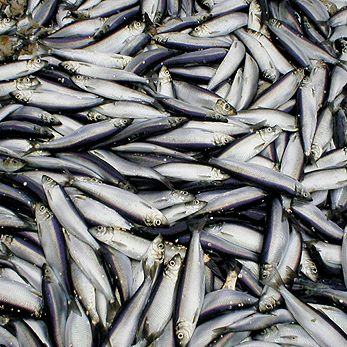Local subsistence hunting as well as commercial whaling and sealing have a long history in the OSPAR area, especially in Region I. In the 17th century, hunting for bowhead and northern right whales brought these species to very depleted levels, with only occasional bowhead whales now being seen east of Cape Farewell in Greenland. Modern whaling, which began off the coasts of northern Norway during the 1860s targeting fast-swimming fin whales, was based on bringing killed animals to land stations for processing. This industry declined at the beginning of the 20th century as stocks of the large whales, and in particular the blue whales, in the OSPAR area were depleted and the focus on large whaling moved to the Southern Hemisphere.
Management aims at a sustainable yield
Today’s hunting for marine mammals in the North-East Atlantic is limited to participation by Norway, Iceland, Faroe Islands, Greenland, and the Russian Federation. National monitoring programmes are in place for most hunted populations. Results from these programmes are reviewed by international bodies which recommend quotas and management actions as appropriate: the International Whaling Commission (IWC) for large whales, the North Atlantic Marine Mammal Commission (NAMMCO) for cetaceans and seals, and ICES for the ice-breeding seal species, harp and hooded seals. All current commercial hunting of marine mammals within the OSPAR area is under a management scheme which aims at sustainability and low risk of depletion of populations. Species for which no quotas are set are protected. Current hunting practices are therefore not thought to be a threat to marine mammal populations in the area, however, environmental problems such as by-catch in fishing gear, pollution and disappearing habitats may be a challenge for future management.
Commercial sealing is well within quota
Commercial sealing is carried out by Norway and the Russian Federation in the Jan Mayen area of the Greenland Sea (the West Ice) and in the south-eastern Barents Sea (the East Ice), including the White Sea. These areas play important roles in the breeding and moulting annual cycle of harp seals (both areas) and hooded seals (West Ice only). Stocks are subject to monitoring programmes and recommended catch quotas are based on advice provided by ICES. Currently, the harp seal stock in the West Ice is increasing, while the East Ice harp seals have shown a decrease in pup production since 2003. Actual catches taken from these stocks in recent years are only 3% to 7% of the recommended quotas, indicating a decreased interest in participation. The West Ice stock of hooded seals has experienced a continuous decline in abundance since the Second World War, and from 2007 onwards the commercial catch quota for this species has been zero. A small number have been taken for scientific purposes. Harbour seals and grey seals are exploited on the Norwegian and Icelandic coasts (Regions I and II) by local hunters. In Norway, quotas are set by national authorities, usually at 5% of the current abundance estimates.
Commercial whaling is carefully managed
Minke whales and fin whales have been harvested in Regions I and II by Norway and Iceland for many decades. After the IWC introduction of a moratorium (zero catch quota) on all commercial whaling after 1985, a period of high research activity followed to develop management procedures and monitoring programmes to establish a common basis for management decisions. The Scientific Committee of the IWC has developed a Revised Management Procedure (RMP) which is designed to balance long-term yield with an acceptable risk of depletion, combined with a protection level below which all quotas are set to zero. The RMP has been implemented for North Atlantic minke whales and used for quota calculations since Norway resumed minke whaling in 1994 and Iceland in 2006. A survey programme ensures that the North-East Atlantic is covered by partial surveys over a six-year period, thus supplying abundance estimates of minke whales for use in RMP catch quotas on a regular basis. The most recent abundance estimate (survey period 2002–2007) in the areas harvested by Norway is 108 000 minke whales, which is similar to previous estimates (1995: 118 000; 1996–2001: 107 000). The RMP catch quota for 2009 was set at 885 minke whales. Iceland has set a catch quota of 150 fin whales each year for the period 2009–2013.
Local hunting in Greenland and the Faroe Islands
In addition to the commercial hunting activities described above, there is also traditional or local hunting in some parts of the OSPAR area. This is of particular importance off East Greenland where subsistence hunting for ringed, harp and bearded seals, walruses and small cetaceans takes place. Catch and species are monitored and minke whales are managed under the aboriginal subsistence scheme of the IWC. On the Faroe Islands, long-finned pilot whales have been caught in a traditional drive fishery for centuries, with annual catch records dating back to around 1600. The Faroe Islands are at the northern range of long-finned pilot whales, and the catch statistics indicate widely fluctuating availability with a long-term mean annual catch of around 900 animals. A best estimate of the North Atlantic stock of pilot whales is 778 000 animals and is based on survey data from around 1990.

